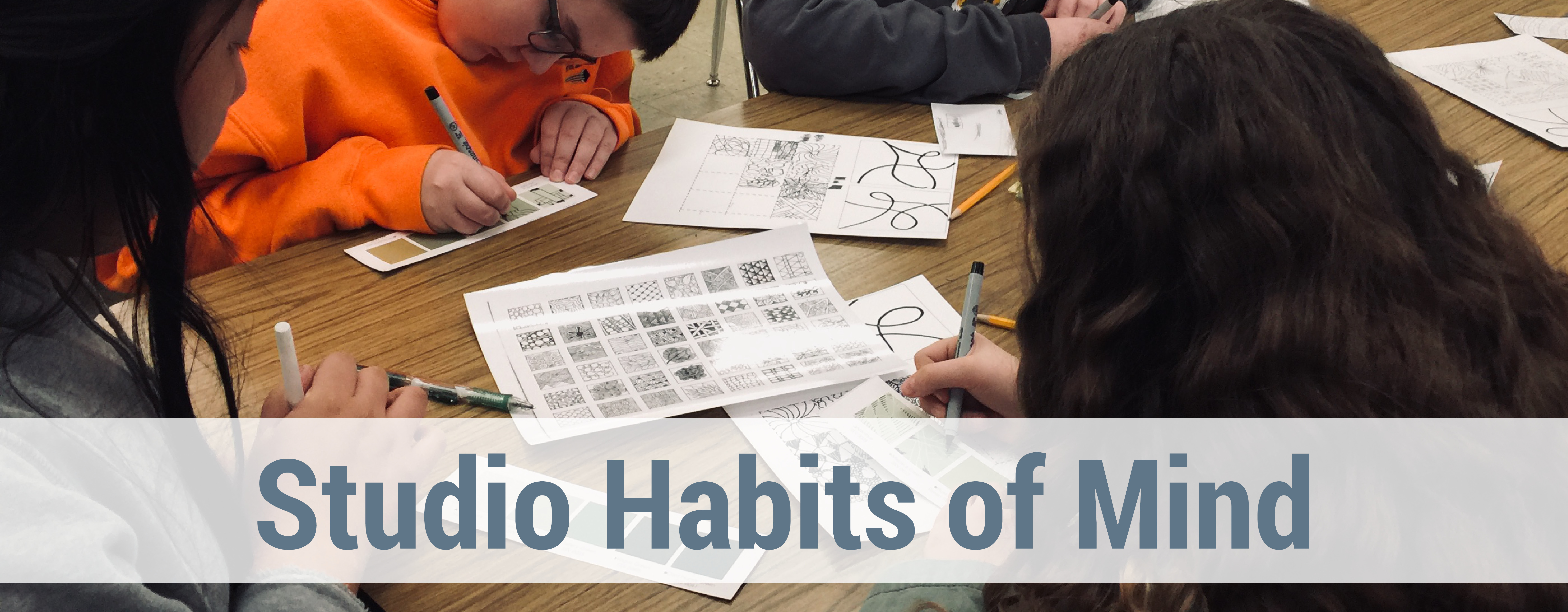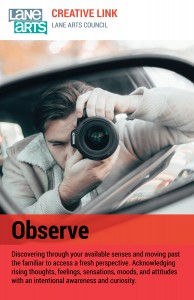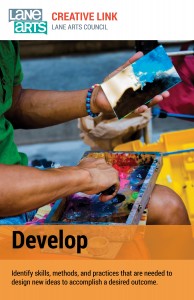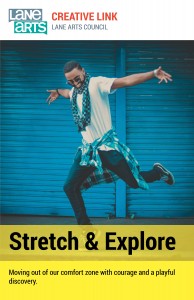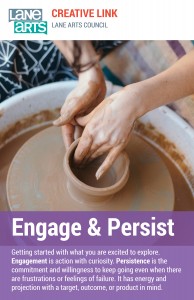The Studio Habits of Mind (SHoM) were developed by Harvard Project Zero researchers. Through their observation of arts education, they concluded that in arts classes, students develop a set of dispositions that are largely helpful and transferable to all academic subjects. These dispositions are laid out as the eight Studio Habits of Mind.
- Observe: Discovering through your available senses and moving past the familiar to access a fresh perspective. Acknowledging rising thoughts, feelings, sensations, moods, and attitudes with an intentional awareness and curiosity.
- Develop: Identifying skills, methods, and practices that are needed to design new ideas to accomplish a desired outcome
- Stretch and Explore: Moving out of your comfort zone with courage and a playful discovery.
- Envision: Using your imagination to develop an idea, project, or creation. Conceptualizing the final project and the steps needed to achieve the desired outcome. Thinking ahead and beyond.
- Express: Actualizing your idea in a form that conveys a concept, mood, or story. Sharing a part of yourself with an authentic audience.
- Engage and Persist: Getting started with what you are excited to explore. Engagement is action with curiosity. Persistence is the commitment and willingness to keep going even when there are frustrations or feelings of failure. It has energy and projection with a target, outcome, or product in mind.
- Reflect: Identifying and discussing elements of your or another’s project to identify both what went well and what could be improved upon. Recalling the original idea and assessing the project from conception until now.
- Understand the World: Recognizing and accepting differences and connections between us and the world. Seeing how art is a reflection of the world and how culture is comprised of art forms and art processes.
The eight SHoM are essential, relatable life skills. Thus, by facilitating the practice of these habits in all types of curriculum teachers can set students up for future academic, creative, and personal success. The SHoM help students to refine their creativity, develop problem solving skills, increase their empowered resilience, and connect with their communities.
The SHoM are a tool utilized across the world to support arts education, arts integration strategies, project based learning, and creative engagement strategies in the classroom. Connection to the SHoM’s impact has been seen locally at schools in Junction City, Bethel, and Oakridge School Districts. Teaching artists Betsy Wolfston, Amy Albrecht, and Linda Burden-Williams developed SHoM curriculum,now used by many educators, to support student engagement, learning, life skills development, and deepen understanding of core subject materials.
The SHoM can be used in a plethora of classrooms and school projects. All eight habits do not need to be utilized at once; they can be used separately and in any desired order. The SHoM provide a common language for classrooms, teachers, and administrators to build creativity, resilience, collaboration, and problem solving skills in students.


